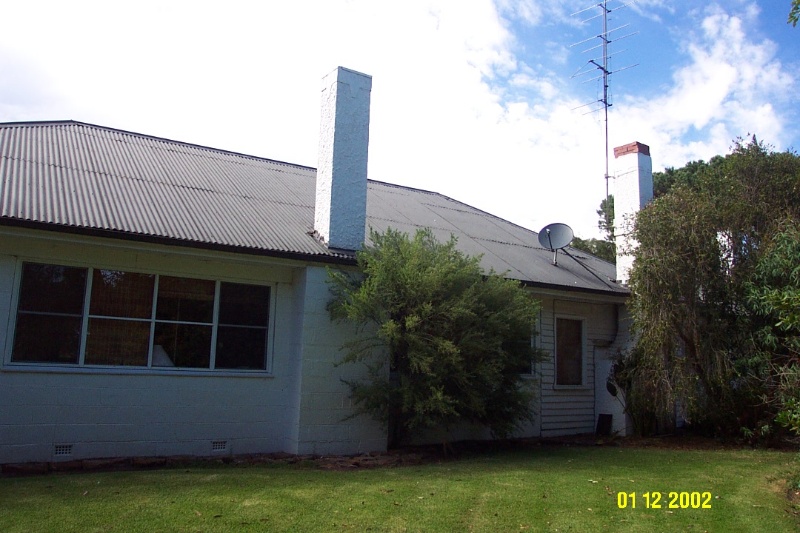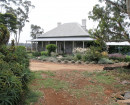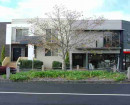HYDE PARK
Hyde Park Road, GATUM VIC 3407 - Property No 001
-
Add to tour
You must log in to do that.
-
Share
-
Shortlist place
You must log in to do that.
- Download report





Statement of Significance
The Hyde Park squatting run, located at the head of the Dundas River about 14.5kms north of Cavendish, was taken up by the partnership of Melbourne merchants, Bells Brothers and Buchanan in 1843. Donald Kennedy and Duncan Cameron Kennedy held it for two years to 1849. It then passed briefly to the partnership of Thomas McKellar and James Cochrane. McKellar bought out Cochrane's interest in the partnership and held the licence alone until September 1858. Parts of the existing timber homestead must date from about this time. The important early twentieth century biographer, Alexander Henderson described McKellar as "one of the outstanding pioneers of Victoria . a far-seeing man . possessed of a natural Scottish shrewdness". Hyde Park was only a stepping stone for Thomas McKellar and his wife Catherine, nee McColl, who was connected with the Yat Nat squatting run. They purchased Kenilworth North licences but remained at Hyde Park, then sold both these to purchase Kanawalla. He then moved to The Grange, which re-renamed Strathkellar. The next owner, Alexander McGill took up the Pre-emptive right, is named in Bailliere's Gazetteer in 1868 and remained as a long-term owner. In 1915 the last link in the Hamilton-Horsham railway line passed through Hyde Park. As usual, Hyde Park was eventually subdivided for Soldier Settlement. The homestead underwent substantial changes after the Second World War. It survives in good condition but with its integrity seriously compromised.
How is it significant?
Hyde Park Homestead complex is of historical and architectural significance to the community of Cavendish and to the southern Grampians Shire.
Why is it significant?
Hyde Park Homestead complex is of historical significance for its associations with several important, influential pastoral families and their interconnection. It is of particular interest for demonstrating the relatively humble beginnings of the very successful squatter, Thomas McKellar who is considered one of the outstanding pioneers of Victoria. Hyde Park is of architectural significance as an example of a simple early homestead, which developed little after the 1860s and still reflects the pre-Land Selection period.
-
-
HYDE PARK - Physical Conditions
The homestead and outbuildings are in very good condition. [The woolshed and stone cottages were not inspected.]
HYDE PARK - Physical Description 1
The homestead at Hyde Park is a group of small single-storey buildings, the earliest constructed from timber using vernacular forms with stone and brick chimneys, corrugated iron roofs and simple timber verandahs contiguous with the main roofs. The roof over the earliest section is hipped while that over the kitchen wing is gabled. At the rear there are small timber outbuildings, possibly dating from the earliest period of settlement. While the surviving fabric is early, it is more refined than the most primitive methods of construction, such as the timber slab, mass masonry or the rare pise, suggesting a date in the 1850s. There is a timber woolshed of uncertain date further to the rear of the homestead and it is said that there are stone cottages, used as shearers' huts elsewhere on the property. The homestead underwent substantial modernisations and extension after the Second World War. The homestead is set within a mature garden, largely dating from the twentieth century.
HYDE PARK - Historical Australian Themes
Theme 3: Developing local, regional and national economies
3.5 Developing primary production
3.5.1 Grazing stock
3.5.2 Breeding animals
3.5.3 Developing agricultural industries
Theme 5: Working
5.8 working on the landHYDE PARK - Usage/Former Usage
Continuing as a pastoral property?
HYDE PARK - Integrity
Low degree of integrity.
HYDE PARK - Physical Description 2
Bells and Buchanan, first owners of squatting lease, Melbourne merchants, first owners of Englefield
Donald and Duncan Cameron Kennedy, purchased Hyde Park in 1847
Thomas McKellar, purchased Hyde Park in 1849
Alexander McGill, purchased Hyde Park in 1858 and pre-emptive rightHYDE PARK - Physical Description 3
Hyde Park Pre-emptive Right
Heritage Study and Grading
Southern Grampians - Southern Grampians Shire Heritage Study
Author: Timothy Hubbard P/L, Annabel Neylon
Year: 2002
Grading:
-
-
-
-
-
HYDE PARK
 Southern Grampians Shire
Southern Grampians Shire
-
..esterville
 Yarra City
Yarra City -
1 Alfred Crescent
 Yarra City
Yarra City -
1 Barkly Street
 Yarra City
Yarra City
-
-










